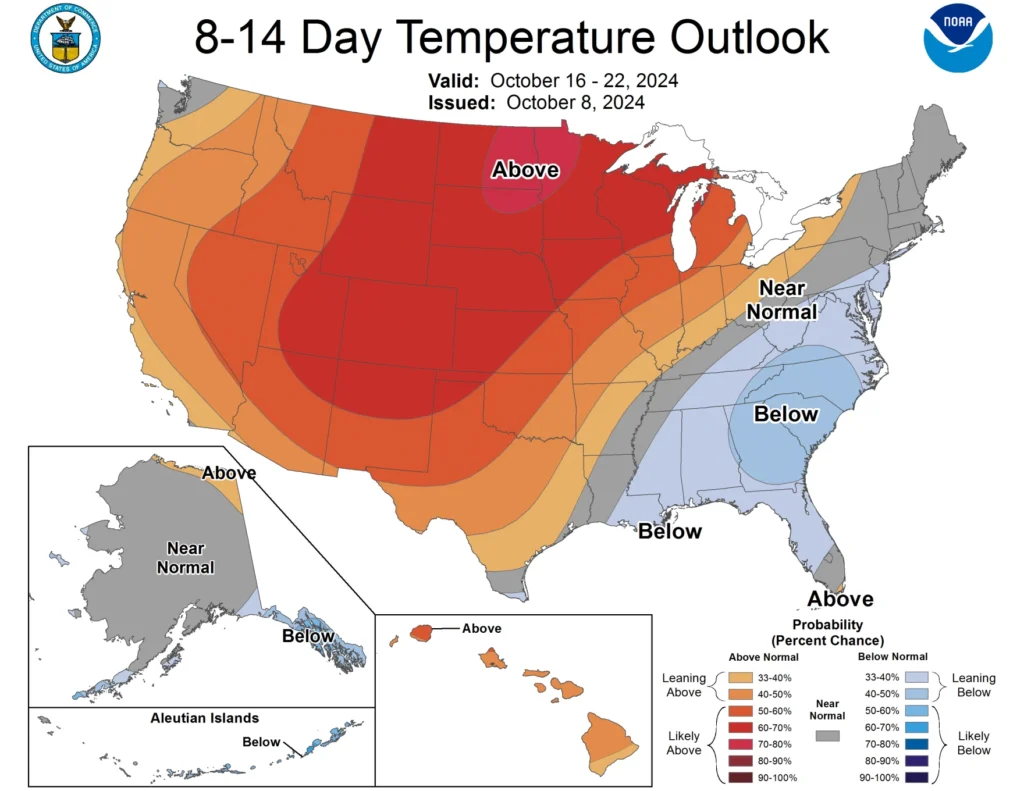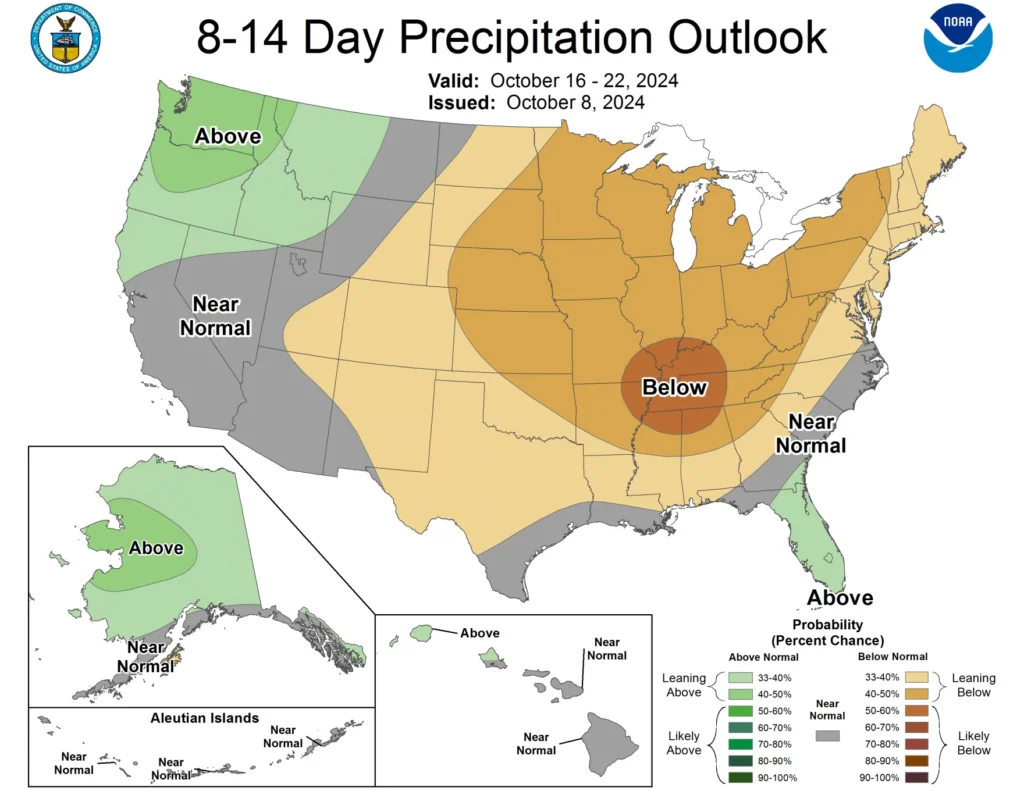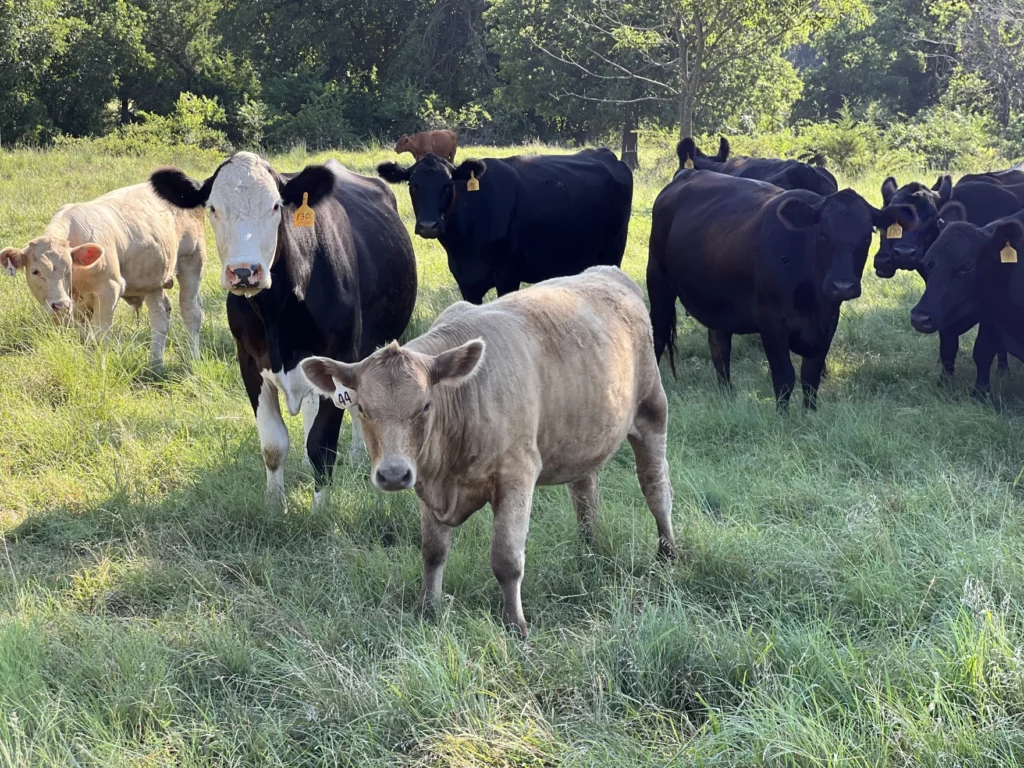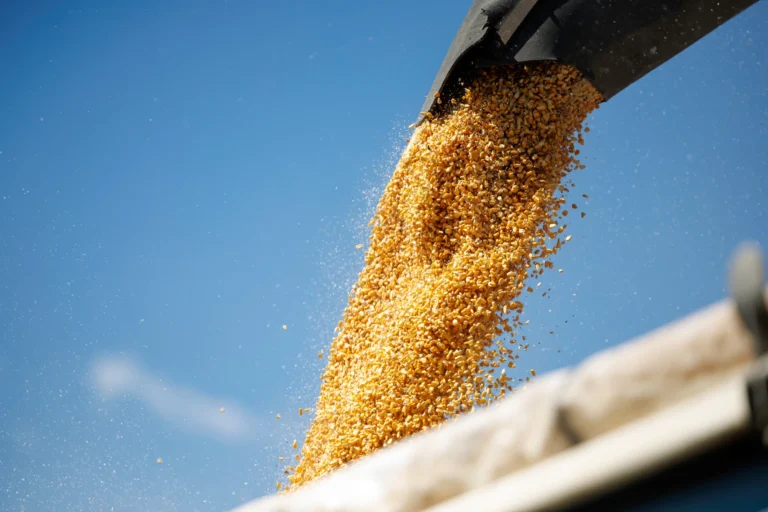Fall is typically a drier time of the year for the Great Plains and Midwest. But drought is once again rearing its head in much of the region, and experts are not seeing relief anytime soon.
As Ralph Lents harvests corn and soybeans on his farm in southwest Iowa, he said some precipitation would be welcome.
“We got a lot of dust and dirt and everything,” said Lents, who has been farming for about 50 years. “It’d just settle everything down, you know, and take the dirt out of the air. It’s kind of hard to breathe with all this dust and stuff in the air.”
Autumn is typically a drier time of year for the Midwest and Great Plains. But this fall has been unseasonably warm and dry. Above normal temperatures and below normal precipitation are expected until Oct. 22, according to data from the National Weather Service’s Climate Prediction Center.
Some areas have been parched for the last 30 days, and in some cases, since the middle of the summer, said Dennis Todey, director of the U.S. Department of Agriculture’s Midwest Climate Hub.
“We’ve had some spotty rainfalls in places that have been beneficial,” Todey said. “But unfortunately, the widespread area has seen very dry conditions. And along with that, we’ve seen very warm conditions, so what little moisture there is available is drying things out very quickly.”


For farmers who are harvesting crops, the weather is making vegetation dry and increasing its risk of burning. Fire danger in the fall can be a problem in fields because the crop is dry. Now, it’s more of a concern because the surrounding areas are also dry.
In Iowa, there have been reports of equipment fires, and several burn bans are in effect across the state. For Lents, this means being smart while harvesting crops – not making unnecessary trips across a field and conserving moisture.
“You know, you just use some common sense and be wise what you’re doing,” Lents said.
The drought conditions are also causing low water levels in the Mississippi River, Todey said, which are driving up transportation costs for farmers.
Dry and hot fall
Big portions of the the U.S. are in at least a moderate drought as of Oct. 1, according to the U.S. Drought Monitor. That includes about 30% of the region stretching from Ohio to Minnesota and down to Missouri, more than 40% of the region from Kansas to North Dakota, and more than 30% of the region from Oklahoma to Tennessee.
Many producers grappled with ongoing drought last summer into the spring throughout the central U.S., especially in Iowa and parts of Kansas, Missouri, Nebraska and Oklahoma. Those drought conditions eased earlier this summer before returning, according to the National Integrated Drought Information System.

Some states, such as Kansas, have also seen nearly record-high temperatures this month, said Matthew Sittel, Kansas’ assistant state climatologist.
“90s in October are not unprecedented, but they’re certainly unusual,” Sittel said
Kansas typically has its first freeze near the beginning of the month, and Sittel said it’s likely the state will see a later freeze this year.
Todey said the recent weather conditions are in part related to the developing La Niña climate pattern, which typically ushers in warmer and drier autumns. High pressure over the region preventing weather systems from forming and bringing moisture is also a player, Todey said.
It’s possible that ongoing drought might continue and worsen in parts of the region, according to the National Weather Service’s Climate Prediction Center. The center shows a rapid onset drought risk is also in place for certain areas because of the warmer temperatures, lack of precipitation, low soil moisture and low rainfall prediction for the next couple of weeks.
While corn and other crops are being harvested, Todey said there is some concern for winter wheat planting. That’s because for crop insurance coverage, seeds need to be planted by later this month in some places, while that deadline has already passed in Iowa, Minnesota and Wisconsin.
“It’s all part of the changing climate system that has us very concerned,” Todey said. “And it is why we do what we do, to help share information with producers about what’s going on and to help them manage through this in the shorter term and looking ahead to the longer term.”

Tightening cattle herds
In the beef industry, ongoing drought conditions have shrunk cattle herds. Drought can hurt hay production and water supplies, which can make it expensive for producers to keep herds.
Derrell Peel, an extension livestock marketing specialist at Oklahoma State University, said although the industry runs in cycles, cattle numbers are low. The national beef cattle herd is the smallest it’s been since 1961 and drought has pulled the numbers down over a handful of years, he said.
“The bottom line is, beef production continues to get tighter in the U.S.,” Peel said. “So we’ve got record high beef prices for consumers, and we’re going to continue to have record high prices for the foreseeable future.”
Peel said there are enough hay supplies to get through the winter, but producers are looking ahead and are concerned about the growing conditions for the coming summer.
“Going forward, I think it really has to do with producers’ expectations,” Peel said. “The fact that we’re looking very dry right now. The weather forecasts are not very favorable both short term and really, long term at this point.”

